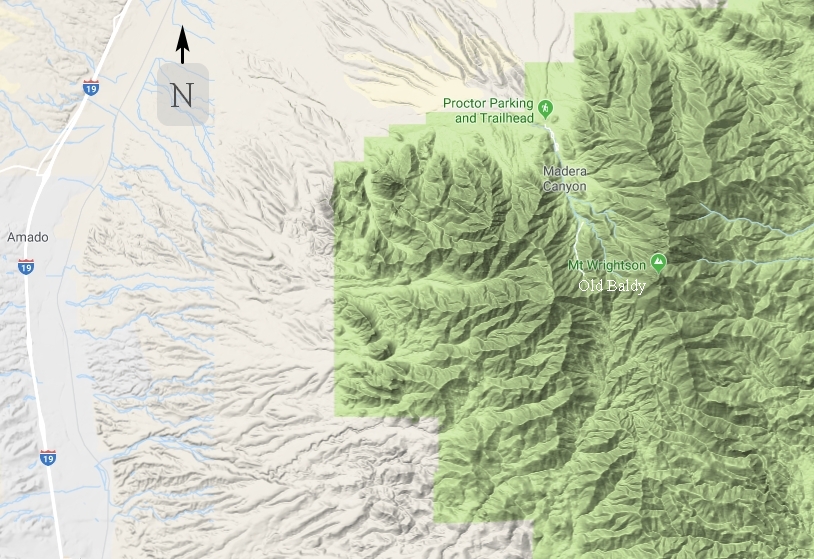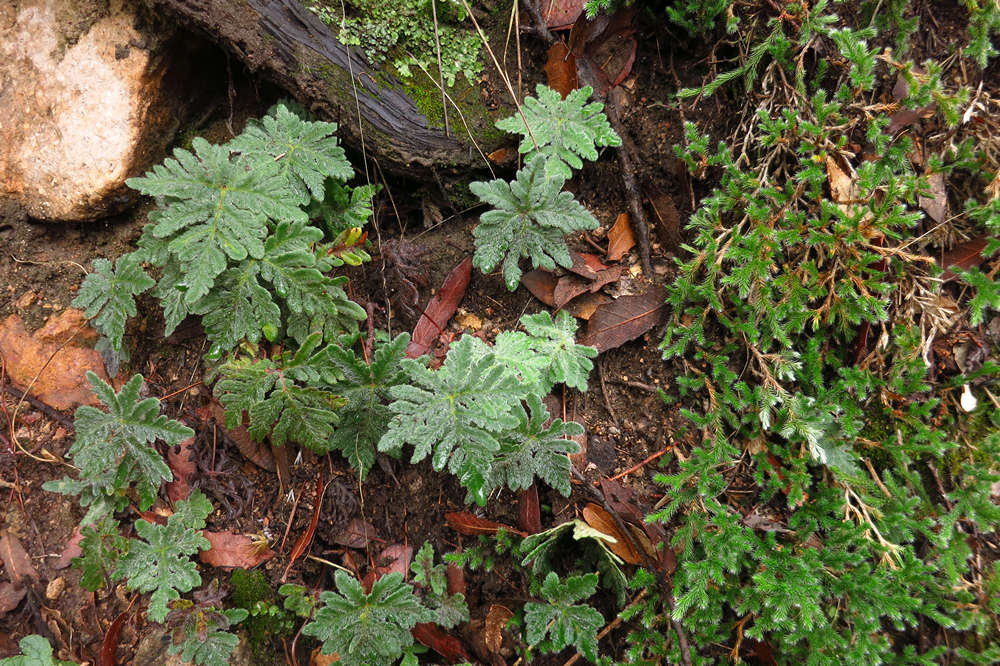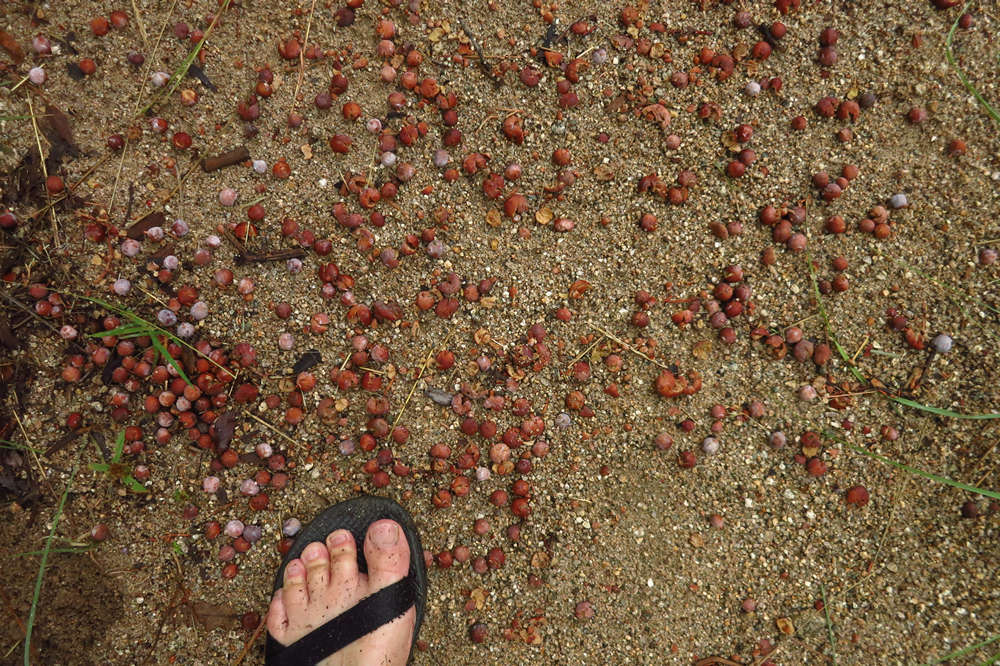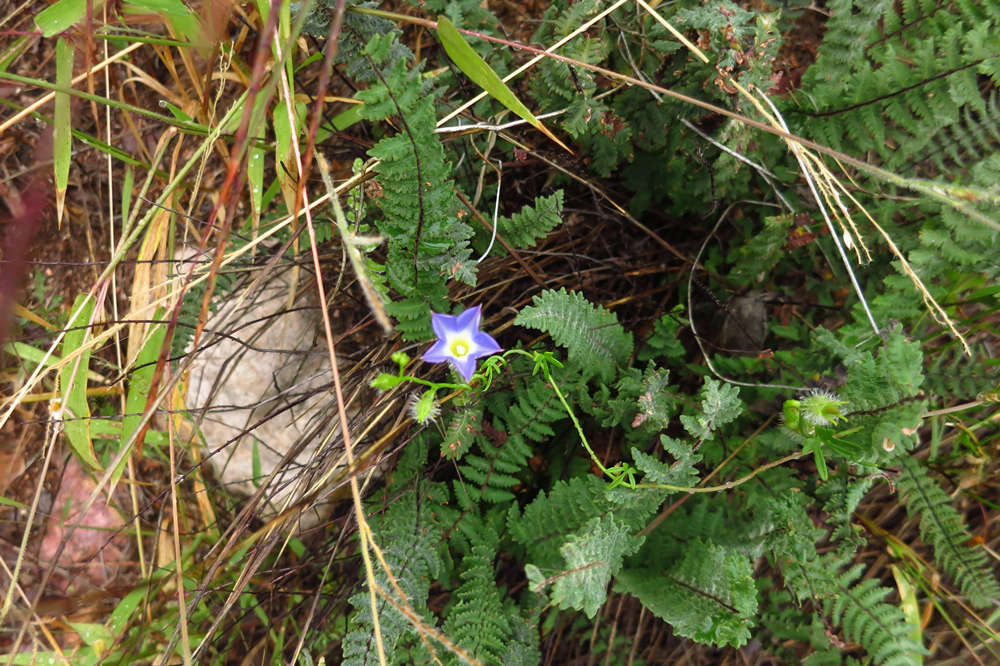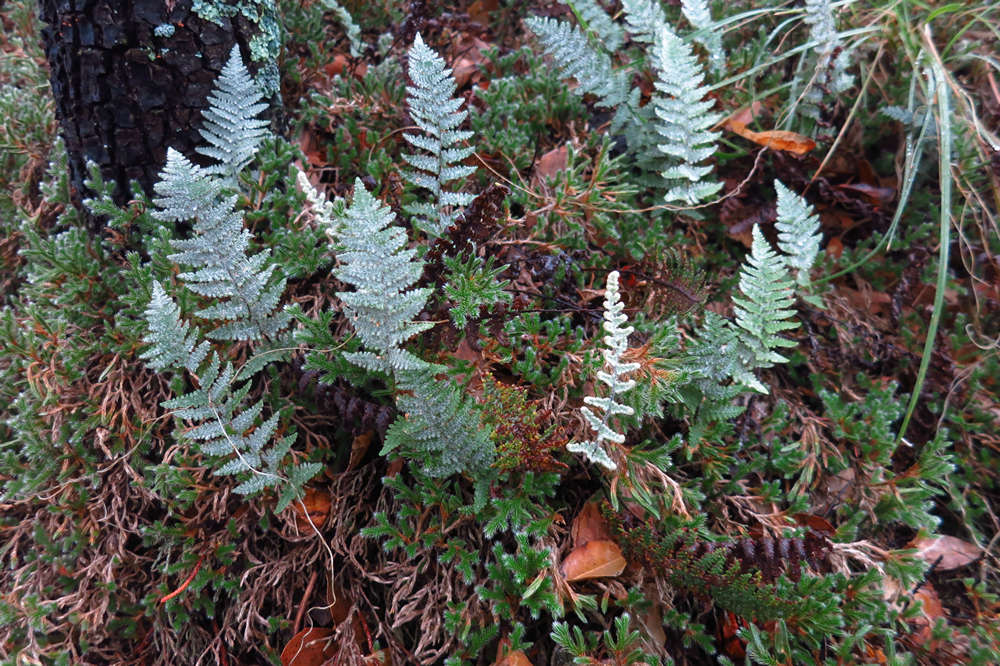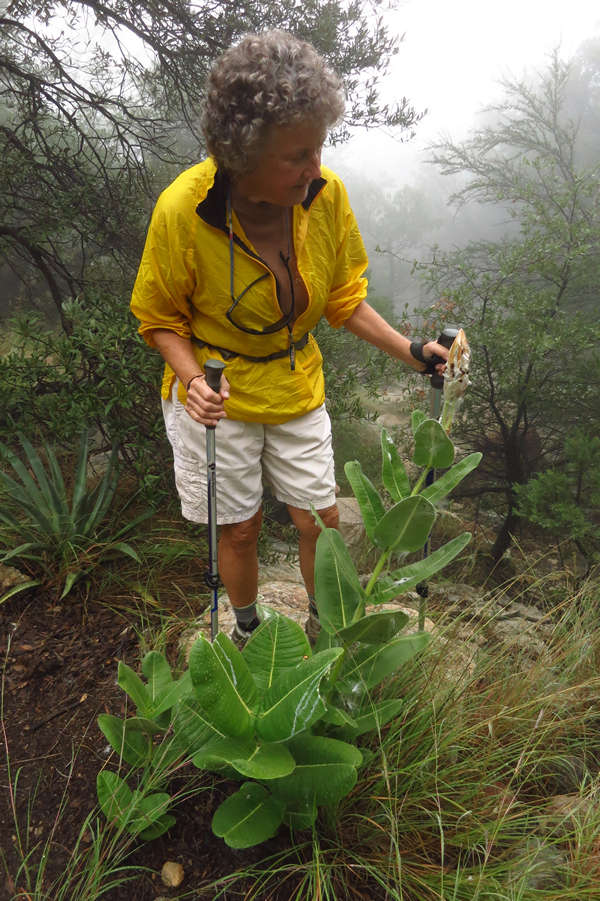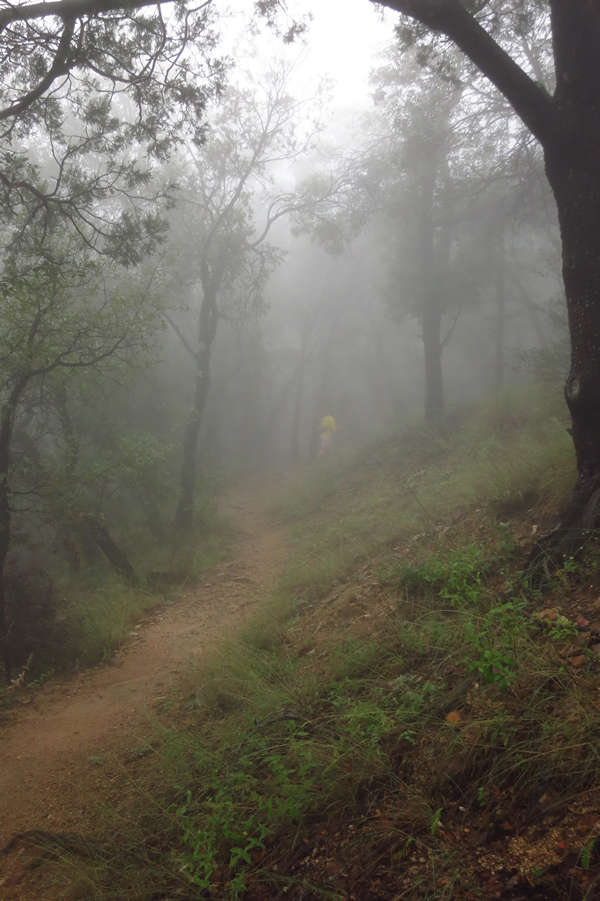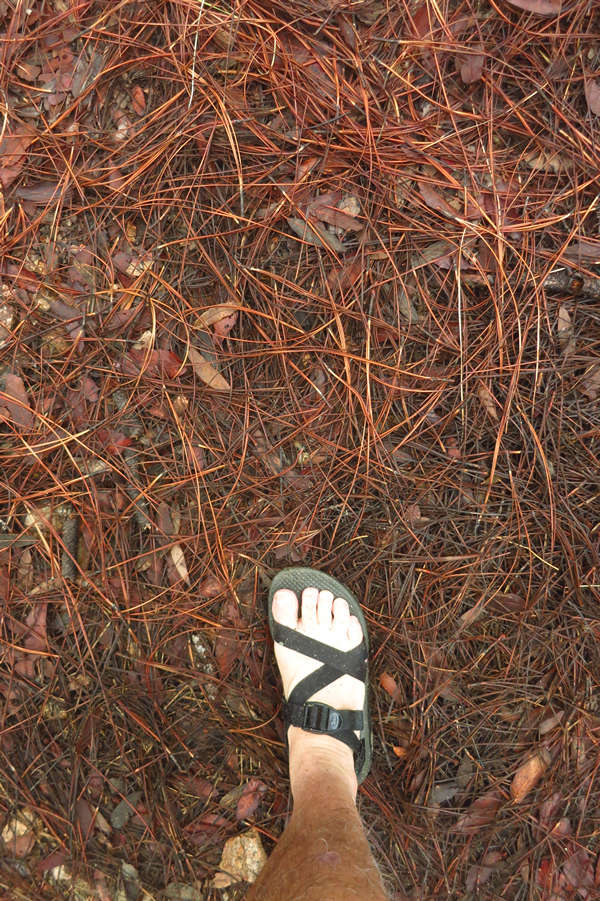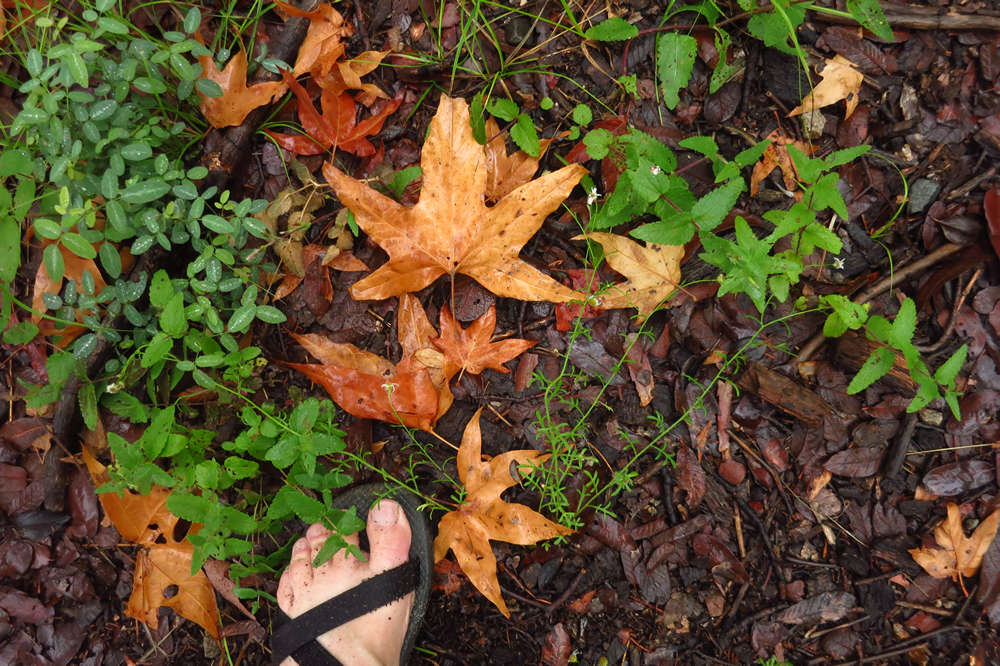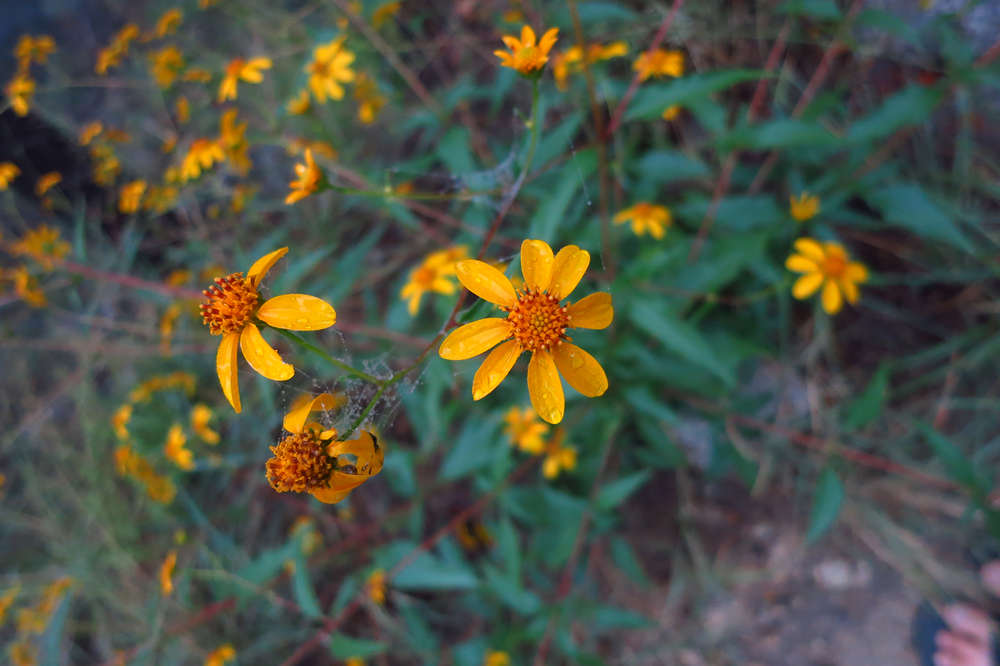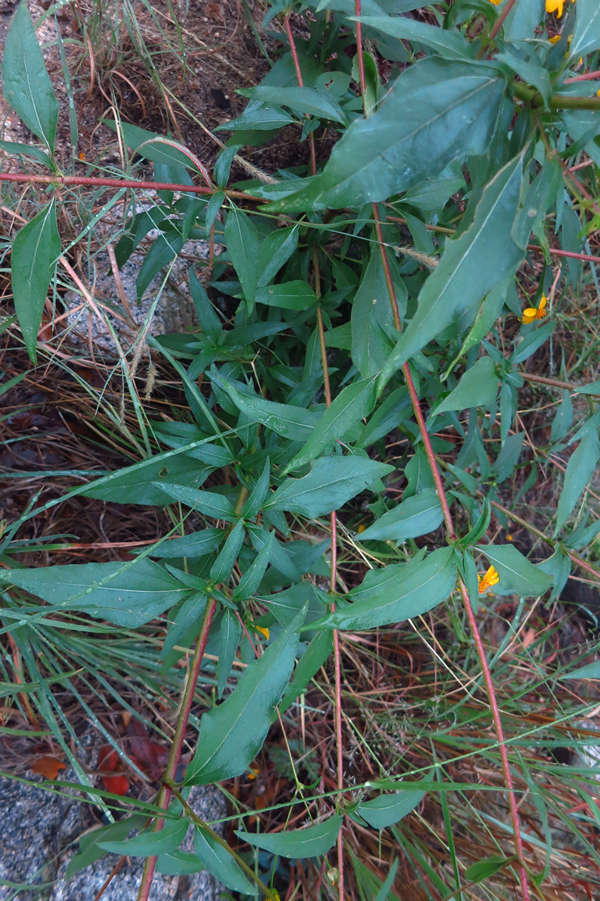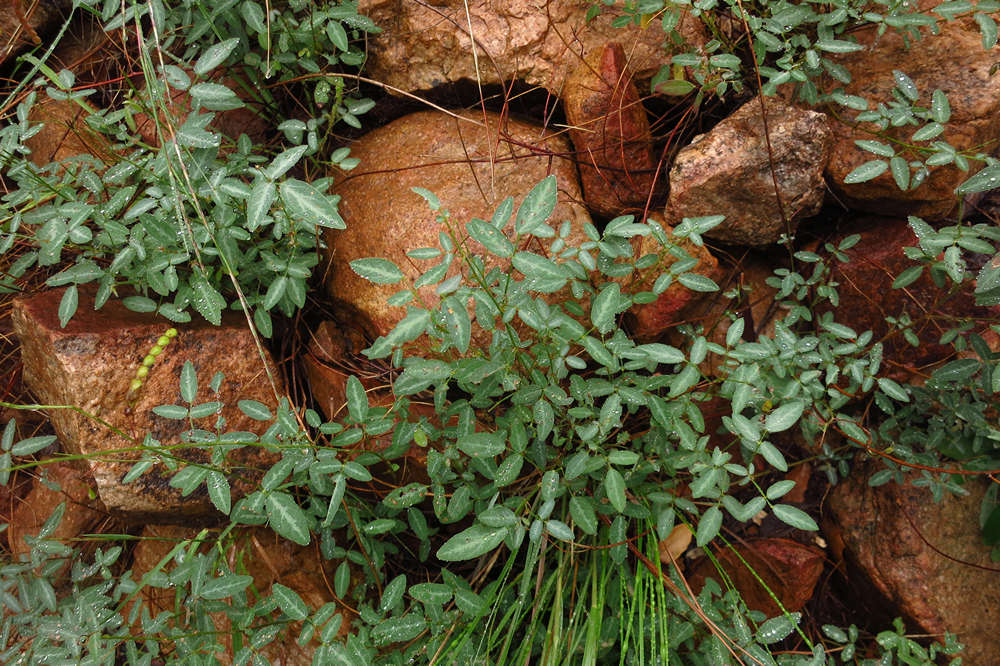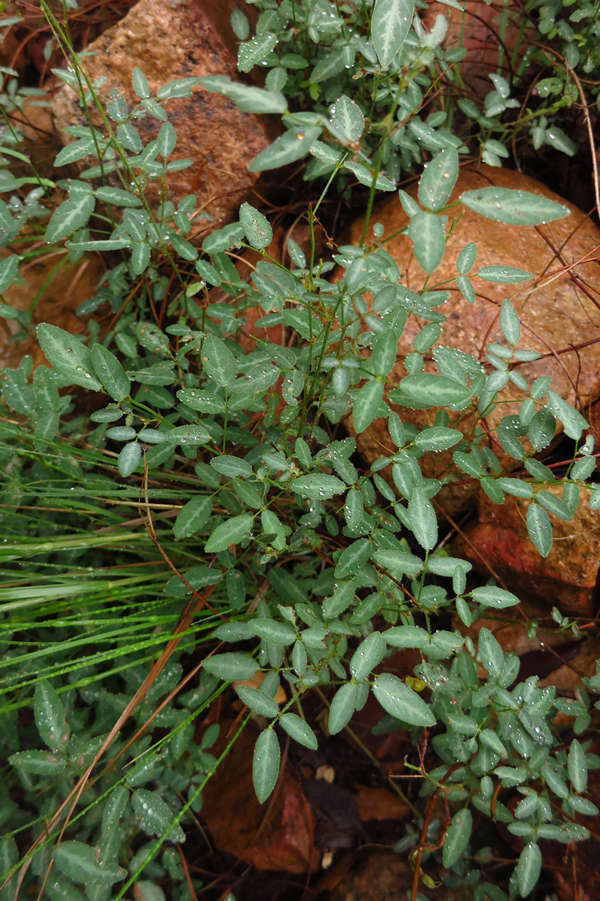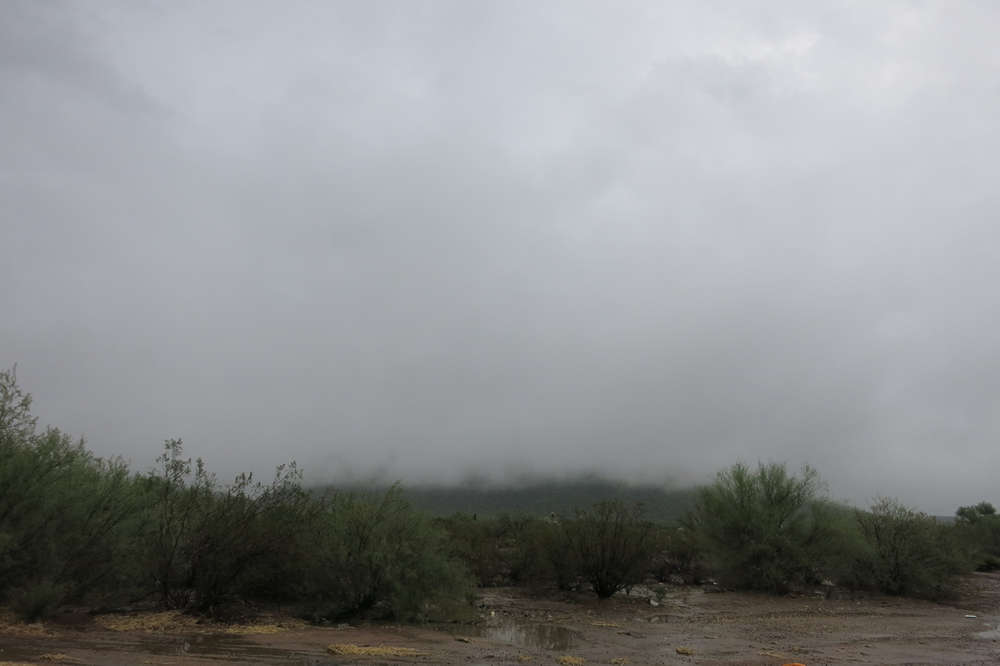Mike Breiding's Epic Road Trips ~2018~
The Santa Rita Mountains
Madera Canyon Nature Trail
Wet, lush and full of grasses, wildflowers, ferns
October the 1st, 2018: Hiking the Nature Trail in Madera Canyon
Betsy and I arrived in Tucson on Thursday, September the 27th. It was warm.

This was the temperature on our front porch around 4:00 in the afternoon. Time to bring out the fans!
After four days of difficult to endure heat we got a break. Rain. Tropical Storm Rosa which was out to sea made landfall in the Tucson area late Sunday. By Monday morning the rain was with us.
To take advantage of the cool wet weather Betsy and I decided to head down to Madera Canyon for a short hike.
We were amazed and delighted by what we saw.
Madera Canyon is a north facing canyon which helps keep it cool and moist.
Click on the photos below for a larger image.
Here is something we had never seen before: an empty lot at the Proctor parking area. I guess the rain scared everyone off. But not Betsy and me!
We parked at the Amphitheater parking lot and hiked the two miles up to the Mt Wrightson (Old Baldy) picnic area.
This is what the Proctor parking area looked like. This is what happens when you get lots of rain. For the 8 years we have been coming to Madera we have never seen so many flowers in bloom.
The were large drifts of these wild flowers along the road for most of the way up to the Amphitheater parking lot. And again we found an empty parking lot. It looked like we had the whole canyon to ourselves and the peace and quiet was wonderful.
It wasn't long before we saw more evidence of abundant rainfall. The ferns were fresh and perky looking.
This one is the Copper Fern (Bommeria hispida) which is one of the "Star ferns".
The creeping plant to the right of the Copper fern is Spike moss which is not a moss at all but a "fern ally". This one is Arizona Spike-Moss (Selaginella arizonica)
As its specific epithet (hispida) would imply, the Copper fern is a hairy little thing.
Here are two "Old Baldies". One is visible, one is not. This viewpoint normally offers a stunning view of Old Baldy Mountain. But not today.

Here is the view of Old Baldy Mountain one would normally expect from this spot along the nature trail. This shot was taken in January of 2013.
The ferns were everywhere! I think this one (and the next four shots) is Golden Lip Fern (Cheilanthes bonariensis).
There was a good crop of juniper berries this year. These are from the Alligator juniper (Juniperus deppeana).
Unlike our small junipers in the east the Alligator juniper can reach 75 feet in height and 3 feet in diameter.
There were several nice clumps of Hummingbird Trumpet (Zauschneria californica).
Epilobium canum, also known as California fuchsia or Zauschneria, is a species of willowherb in the evening primrose family (Onagraceae). It is native to dry slopes and in chaparral of western North America, especially California. It is a perennial plant, notable for the profusion of bright scarlet flowers in late summer and autumn.
The name reflects that in the past it used to be treated in a distinct genus Zauschneria, but modern studies have shown that it is best placed within the genus Epilobium. Other common names include California-fuchsia (from the resemblance of the flowers to those of fuchsias), hummingbird flower or hummingbird trumpet (the flowers are very attractive to hummingbirds), and firechalice.
The original genus name was in honor of Johann Baptista Josef Zauschner (1737–1799), a professor of medicine and botany in Prague.
Source: WikiPedia
More ferns! This one is Fairy Sword (Cheilanthes lindheimeri).
Fairy sword is the fern we see most commonly when hiking in south-east Arizona.
This made our day!! This is Lemmon's Milkweed (Asclepias lemmonii). Another nearby mountain range - the Santa Catalina has a high peak named Mt Lemmon. This peak and mostly likely this milkweed were named after botanist Sara Plummer Lemmon.
Look at the size of the those leaves! The white streaks are from a milky, latex like substance that bleeds from the leaves of Asclepias when they are damaged.
By now we had gained enough elevation to be in the clouds. It was quite beautiful and a rare treat for us.
These are the needles of the Apache pine (Pinus engelmannii). There are not many trees at this elevation (5000') but once you get to about 5400' they become more common.
Here we have some leaves of the Arizona Sycamore Platanus wrightii. Surprisingly we saw new growth on some of the trees. Another indication of the abundant rain fall.
More trailside beauties. We had never seen this in bloom this time of year.
Can you identify this plant for us?
Maybe these leaves will help with the identification.
Here is another plant we have never seen on the many times we have been on this trail. I can only conjecture that it must be dormant by now most years and thus we have never seen it.
Any guesses as to the plant's name?
We arrived at the Mt Wrightson picnic area in heavy fog/clouds and sat under the gazebo while having a snack. Soon there was the pitter-patter of rain on the metal roof. The rain accompanied us on and off as we made our way back down the trail to the amphitheater parking area.
On the way back up I-19 to Tucson the rain was so heavy at times it was difficult to see the roadway. We stopped at the San Xavier Co-op Farm to pick up some mesquite flour which Betsy uses in her banana bread when we are in Tucson. The women at the Co-op advised us not take the back roads to Tucson as all the arroyos were flooded. I am glad she warned us off!
This is the view of Big Cat mountain we saw when we arrived back in the Tucson Mountains where we spend the winters.
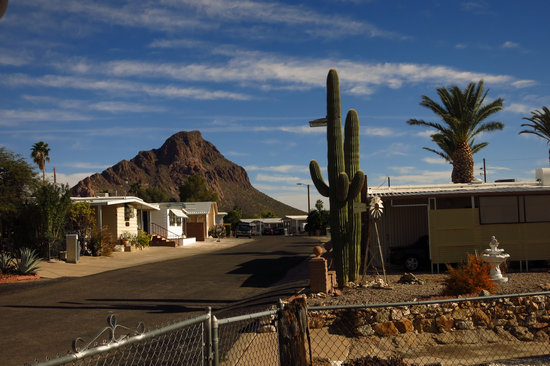
Here is a more typical view of Big Cat Mountain.
The rain continued into late afternoon and by the end of the day our rain gauge had about an inch of rain in it. This should really help keep the already green Sonoran desert green into the winter months.
What a great day!
Until next time,
Mike and Betsy
